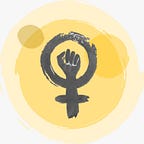The Shadow Pandemic — Why we need a feminist humanitarian response to COVID-19
On March 11, 2020, WHO declared COVID a pandemic. Almost immediately, women’s rights advocates and responders to gender-based violence raised the alarm. They predicted the pandemic’s lockdowns, quarantines, and closure of services would increase violence against women and girls while simultaneously making it harder to access services. The last 100+ days have proven these predictions right.
The pandemic deepens entrenched harmful gender norms and the solutions and policies devised by ungendered decision-making bodies perpetuate existing inequalities. Women and girls in emergencies and protracted crisis are hit hardest by the mitigation measures that were put in place by governments to curb the transmission of the virus. International Rescue Committee (IRC) risk analysis from Women’s Protection and Empowerment (WPE) teams in 34 countries found women raising concerns about their safety in the home, experiencing increased violence, feeling isolated and overburdened and reported concerns about child, early, and forced marriage of adolescent girls. A “shadow pandemic of violence” is unfolding and we must act immediately to save lives.
We need a feminist humanitarian response to COVID. We must not repeat the mistakes of ungendered responses to humanitarian crisis that exacerbate risks and barriers for women. Instead, the humanitarian system should capitalize on the strength of a feminist response to create better outcomes for all people, by empowering women and girls in their role as agents of change.
1. If we fail to take a feminist approach, we put lives at risk. Women and girls experience life threatening risks beyond the health risk posed by the virus. They have different needs and face different socio-economic risks due to structural gender inequality. But women are less likely than men to have power in decision making regarding the response to the outbreak. Their specific needs will likely go unmet or even worse: the response may put them at increased risk. According to UNFPA an additional 15 million extra cases of GBV are expected for every 3 months the lockdown continues. There is a clear need for the participation of women’s rights organizations and for rigorous gender mainstreaming. Experiences from past outbreaks demonstrate that the absence of such data sets policy makers up for a response that is oblivious to women’s and girls’ needs.
2. A feminist approach will improve the overall response. Women are critical agents of change in curbing the transmission of the virus. In their traditionally ascribed roles of being in charge of caregiving and running the household they are crucial for household and community health and key entry points to disrupt the chain of transmission through behavioral change. However, IRC data from project locations indicates that women feel less informed than men. Likewise, men more frequently determine how limited resources are spent within the house. Such aspects have massive influence over the fact whether or not women and girls make use of health and prevention services. Programming has to take these power dynamics into account and look to gender transformational responses that address power imbalances at all levels.
3. We risk a regress in gender equality. The pandemic puts women and girls in humanitarian emergencies and protracted crisis at increased risk of exploitation and abuse. It will have a disproportionate economic impact on women and harmful traditional stereotypes place the burden of unpaid care on women and girls in most societies. As health services are overburdened, women and girls may lose access to lifesaving sexual and reproductive health services. A spike in domestic violence is threatening women and girls across the globe, while mitigation measures isolate victims further and many GBV programs are forced to shut down or limit their activities. Experts warn that women will feel the effects of the pandemic for a long time. UNFPA predicts that disruptions in prevention efforts will lead to 2 million cases of female genital mutilation and an additional 13 million child marriage cases that could otherwise have been averted.
Now that we have established why a feminist response is necessary to create better outcomes for all -what is a feminist humanitarian response to COVID? A feminist humanitarian response to COVID…
- is inclusive of traditionally marginalized voices of women, girls and others,
- takes existing power dynamics — because of gender inequality and other identities — into account and seeks to equalize them towards structural change,
- empowers women as agents of change and recognizes them as essential to informing and succeeding in humanitarian goals,
- provides resources to local feminist/women-led organizations and positions them to lead in humanitarian response,
- uses data to inform programming about women’s lived experiences and to monitor effectiveness of programming.
The international community needs to step up and ensure a strong, tangible and accountable inclusion of women and girls and their needs in the humanitarian response to COVID - otherwise they will deal with the fallout of this crisis for decades to come, long after a vaccine has been developed and economies have recovered.
You can find IRC’s full position paper with additional information on the need for a feminist humanitarian response to COVID here.
